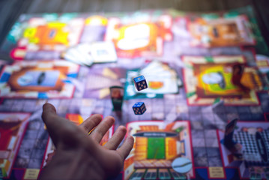Board games have remained a popular form of entertainment for decades. During the height of the COVID-19 pandemic in the US, the demand for tabletop games grew at an incredible rate because many experienced them as a reprieve from the monotony of lockdowns and quarantines.
Dan Yarrington, founder of New-Hampshire based Tabletop Tycoon, speaks to how great board games are for connecting people. He and his team put a lot of effort and research into exploring what qualities in tabletop games help them connect with their target audiences.
Here, Dan investigates some of the qualities that make for a well-received board game, as well as how board game creators utilize this info to better engage their audiences.
Originality
There are a lot of tabletop games out there. If a game is not original enough to stand out, it simply will be overshadowed by tried-and-true titles or the next big game.
Many of the most well-received tabletop games have several original elements, whether they be the design, goal, or way that the game is played. Naturally, game designers want to consider how their game will appeal to players through its originality.
According to Dan Yarrington, this does not mean that each new game needs to completely reinvent the wheel. Some elements of our favorite tabletop games frequently pop up in others because they are appreciated by players.
Remember, however, that people will not have much of a reason to play your game if it incorporates too many qualities from others. Originality is key to replayability!
A Sense of Balance
Amongst competitive friends or family, tabletop games can get intense if they are engaging enough. Generally, people can get more into the competitive spirit when they feel that a game has a sense of balance. If you feel as though you do not play a significant factor in whether you win or lose, you may not feel fully emerged in the experience.
There are many considerations that go into a game’s balancing system from a designer’s perspective. To start, designers want to ensure that each participant begins the game on equal footing.
Dan Yarrington notes that many of the best games involve a balance of skill and luck. This is because games that are only interested in the skill level of the players can be difficult for newcomers to get into.
Entirely luck-based games may have issues connecting with players because they do not feel as though their playstyle factors into the gameplay at all. Players want to feel like meaningful decisions play a role in victory or defeat.
 It is easier to feel connect with a tabletop game if it features well balanced gameplay
It is easier to feel connect with a tabletop game if it features well balanced gameplay
Encourages Variety
Many of the elements that factor into creating a great tabletop game are linked to the game’s replay value. After all, the clearest sign of a solid game is that players are eager to pick it up again and again.
One of the simplest ways to ensure that a game has variety is by having it support multiple play styles. When players can deploy different strategies to win the game, it encourages players to find their niche as they try to win.
Dan Yarrington speaks to how there are many ways that game designers can encourage variety, and considerations are crucial for creating a game that is engaging for players. For example, some games encourage variety through complex gameplay that all but ensures players will have a different set of decisions to make each game.
Another way that games incorporate variety in gameplay is by tastefully incorporating luck. Games that can strike a balance between luck and strategy give players a sense of control but prevent them from having too much sway over the entire course of the game.
Simple to Understand
Games connect with people best when they are not particularly difficult to understand. After all, being able to pick up a game to play with friends or family is easier the less time is needed for explaining rules and strategy. Games that have complicated or unclear goals will discourage players from getting immersed .
Many of the most popular and engaging tabletop games have clear rules that players can easily remember for a playthrough. It is important to remember, however, that a game being easy to understand and remember does not mean that it needs to be easy to win.
The best games will have simple rules for victory but will have suitable obstacles as players try their hand at winning. Deep strategy, luck, and a variety of ways to engage with other players can make games with even the simplest official rules offer a rich experience.
Fun to Play!
All the considerations that go into making a great tabletop game mean nothing if the game is not fun to play with friends and family. There are many games out there that build an incredible world, have clear goals, a good balancing system- and just do not inspire people to play.
A lot of things can go awry when designing a game, but there are a few hallmarks that can make a game more frustrating than fun. For example, games that feature early player elimination , long downtime between turns, or have an unbalanced end game can be less fun for players.
Research has gone into what a fun game entails, and most agree that creating a rich tabletop game involves thoughtful planning. Considerations such as how players interact with one another, how strategy and luck apply to gameplay, and the balance struck between luck and skill all play a role in the entertainment value of a game.
Remember that every player has their preferences, and even fun games can go unappreciated. Still, Dan maintains that incorporating elements meant to encourage entertainment is a great step in the right direction.






